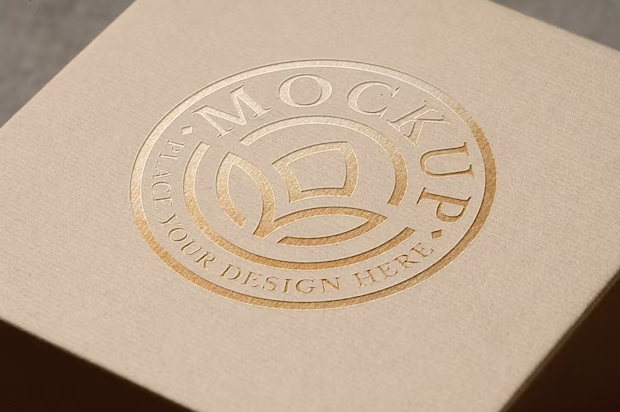In the world of paper packaging, there are two design techniques that can take your product to the next level – embossing and debossing. These techniques add texture, depth, and sophistication to your packaging design, making it stand out from the competition. Whether you’re creating custom paper bags, paper printed boxes, or rigid paper boxes, embossing and debossing can give your packaging a unique and eye-catching finish. In this article, we will explore the benefits of embossing and debossing, the process involved, and how to choose the right technique for your brand.
Understanding Embossing and Debossing
Embossing and debossing are printing design techniques used to create three-dimensional effects on various materials, including paper, cardboard, and leather. Both techniques involve the use of dies – metal plates with raised or indented designs – to add dimension and texture to the surface of the material.
Embossing is the process of pressing a design onto the material from underneath, creating a raised surface that can be felt when touched. This technique adds a 3D-like effect to your packaging, making it visually appealing and engaging for customers.
Debossing, on the other hand, involves pressing the die into the material from above, creating an indented design that gives your packaging a sunken appearance. Like embossing, debossing adds texture and visual interest to your packaging, making it stand out from the crowd.
Both embossing and debossing offer numerous benefits for your packaging design, including increased durability, a tactile experience for customers, and a sense of luxury and sophistication. These techniques can also highlight essential information and branding on your packaging, helping customers make informed purchasing decisions.
The Process of Embossing and Debossing
The process of embossing and debossing starts with creating a metal die that contains the desired design or logo. The die is then pressed onto the material, either from underneath for embossing or from above for debossing, using heat and pressure. This process ensures that the design is imprinted onto the material, creating the raised or indented effect.
To achieve the desired effect, different types of dies and styles can be used. Single-level dies are the most common and cost-effective option, while multi-level and sculpted dies offer more intricate and detailed designs. Bevel-edge dies are used to prevent cutting the material, while chisel dies are commonly used for debossing. Textured dies add an etched texture to the design, while rounded dies create rounded corners for logos and typographic elements. Sculptured dies are the most expensive and require a custom sculpt for the stamped image or embossed pattern.
The Benefits of Embossing and Debossing in Packaging Design
Embossing and debossing offer a range of benefits for your packaging design. Firstly, these techniques add texture and depth to your packaging, making it visually appealing and engaging for customers. The raised or indented designs create a unique tactile experience, making your product more memorable and appealing.
In addition to the aesthetic benefits, embossing and debossing also provide practical advantages. These techniques enhance the durability of your packaging, making it more resistant to wear and tear during shipping and handling. The raised or indented designs can also serve functional purposes, such as adding grip to products like books or folders, or providing tactile cues for visually impaired consumers.
Furthermore, embossing and debossing can help differentiate your brand from competitors and convey a sense of luxury and sophistication. The raised or indented designs add a high-end look and feel to your packaging, making it stand out on the shelves and leaving a lasting impression on customers.
Choosing the Right Technique for Your Brand
When considering embossing and debossing for your packaging design, there are several factors to consider. Firstly, you need to determine the compatibility of the technique with your chosen material. Debossing requires more heat and may not be suitable for all materials, such as plastic or fabric. Embossing, on the other hand, can be done on almost any surface.
Another consideration is the level of detail you want to achieve in your design. Embossing allows for more intricate and detailed designs, while debossing is better suited for simpler designs. The choice between embossing and debossing ultimately depends on your brand aesthetic and the message you want to convey.
It’s also important to work with a reputable company that specializes in embossing and debossing to ensure high-quality results. Look for a company with experience using these techniques and one that values communication with their clients. Request sample prints to ensure the crispness, smoothness, and attention to detail of the embossed or debossed design.
Conclusion
Embossing and debossing are powerful design techniques that can elevate your paper packaging to new heights. These techniques add texture, depth, and sophistication to your packaging, making it visually appealing and engaging for customers. The raised or indented designs create a unique tactile experience and convey a sense of luxury and quality. By choosing the right technique for your brand and working with experienced professionals, you can create packaging that stands out from the competition and leaves a lasting impression on customers. So why not give embossing and debossing a try for your next packaging project?
With over a decade of experience in crafting exquisite embossed and debossed paper packaging, Hrenary packaging are your trusted partner for creating premium packaging solutions. Contact us today to discuss your specific requirements








